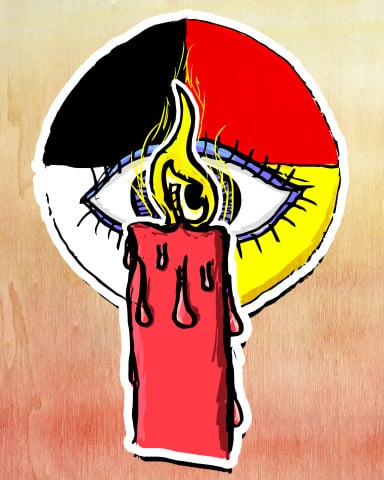 In an aim to demonstrate its increasing solidarity and support, the University of Saskatchewan campus community is coming together to rewrite narratives and raise awareness surrounding missing and murdered Indigenous women.
In an aim to demonstrate its increasing solidarity and support, the University of Saskatchewan campus community is coming together to rewrite narratives and raise awareness surrounding missing and murdered Indigenous women.
Members of the Indigenous Students’ Council, USask Building Bridges and the U of S Students’ Union Women’s Centre invite the campus and larger community to participate in the week’s events. These include a panel discussion, a healthy relationships workshop and a call-for-action rally and candlelight vigil.
In addition, there is an information booth set up in the Arts Tunnel each day from 10 a.m. to 2 p.m. where students, faculty and staff are invited to ask questions and show support for missing and murdered Indigenous women and their families.
Janelle Pewapsconias, former U of S student and current business student at the Saskatchewan Indian Institute of Technologies, was employed with the U of S Aboriginal Students’ Centre as a student leader for the Building Bridges program from May 2013 to September 2015 and is one of the organizers for the week’s events.
Pewapsconias feels strongly that the current dialogue surrounding missing and murdered Indigenous women needs to change.
“I hear a lot of rhetoric around you know, these women put themselves in those positions or they dress a certain way or maybe they just want to be abused and it’s really disgusting. People don’t understand that this is a systemic issue; people don’t understand the effects of history and colonial history. Our main purpose is not only to create awareness on campus but to give people insight into why these issues happen,” Pewapsconias said.
According to the RCMP’s Missing and Murdered Aboriginal Women: A National Operational Overview released in 2014, Aboriginal women are over-represented in missing and murdered cases in Canada. Between 1980 and 2012, over 1,000 Aboriginal women went missing or were murdered. Moreover, Aboriginal women represented approximately 4.3 per cent of the female population of Canada in 2011 and they account for 16 per cent of all female homicides between the years of 1980 and 2012.
For organizers of the awareness week at the U of S, these numbers demonstrate a need for action by the government and the community. The team of organizers began planning during the summer months when they felt the political climate of Canada showed little concern for Indigenous women’s current situation.
“This summer, politically, was a little bit different. We had a party in power that did not support the inquiry into missing and murdered Indigenous women and so our main purpose was to create awareness on campus,” Pewapsconias said.
Newly elected Prime Minister Justin Trudeau has pledged to launch an inquiry into missing and murdered Indigenous women in Canada. Pewapsconias personally feels supported by the new government, but she is waiting to see what unfolds.
“I can only speak for myself. But he supports it, from my understanding, and that is really wonderful. We’ll have to wait and see what happens. But I definitely feel more hopeful now that there is change and I can’t wait to see what happens,” she said.
Nonetheless, Pewapsconias believes that missing and murdered Indigenous women and violence against women in general remains an important discussion for the campus and surrounding community.
“Having the Missing and Murdered Indigenous Women Awareness Week would further push the issue onto campus. I think it will disrupt the negative narratives. It would definitely create discussion and I really hope it challenges some people’s realities, perspectives and positions on missing and murdered Indigenous women,” Pewapsconias said.
Dylan Lambi-Raine, co-ordinator of the USSU Women’s Centre, emphasizes that the issues faced by Indigenous women are not their problems alone.
“Missing and murdered Indigenous women are not an Indigenous problem but rather a human rights problem,” Lambi-Raine said.
Lambi-Raine urges all members of the campus community to participate in the wide array of events provided on campus during this awareness week.
“I, as a white settler ally, encourage all people to attend even if there are some nerves around attending events around Indigenous issues,” she said.
Pewapsconias echoes Lambi-Raine’s thoughts and she insists that this is an initiative that everyone can and should get behind.
“I feel like when you frame things as an Indigenous issue, non-Indigenous folks feel that they are not welcomed or that they don’t have the comfort level to step into those spaces, but definitely they are more than welcome. We want people to have a better understanding. We want to engage people, and make Indigenous women and peoples more visible and more important than what I see currently today.”
—
Image: Jeremy Britz / Graphics Editor